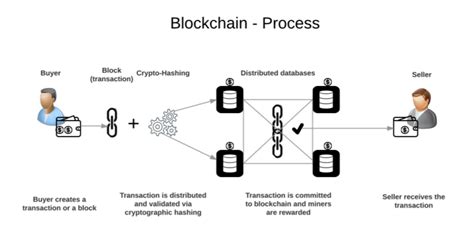Improving Blockchain Security with Artificial Intelligence
The blockchain world is built on the principles of decentralization, transparency, and immutability. However, as its applications grow in various sectors such as finance, healthcare, and supply chain management, the risk of hacking and data breaches also increases. Traditional security measures alone are not enough to protect against sophisticated cyberattacks; therefore, artificial intelligence (AI) plays a crucial role in improving blockchain security.
The Need for Improved Blockchain Security
Blockchain technology relies on encryption to secure transactions and control the creation of new entities. However, even with advanced encryption techniques, there is still a risk that hackers can exploit vulnerabilities in the code or identify weaknesses in key management processes. Furthermore, as more and more companies adopt blockchain-based systems, the risk of a single point of failure increases exponentially.
AI Solutions for Improved Blockchain Security
AI solutions offer many advantages over traditional security measures. Here are some ways in which AI improves blockchain security:
- Predictive Analytics: AI-powered predictive analytics can identify patterns and anomalies in blockchain data that may indicate potential security threats. By analyzing historical data, these systems can predict potential attacks and provide early warning signs of malicious activity.
- Machine Learning: Machine learning algorithms can be trained on large data sets to detect anomalies and anomalies that may indicate suspicious activity. These models can also learn from past experience and improve their predictions over time.
- Real-time Monitoring: AI-powered real-time monitoring systems can continuously scan blockchain transactions for potential security threats, such as unusual network activity or inconsistencies in data records.
- Automated Security Testing: AI-powered automated testing tools can identify vulnerabilities in the blockchain codebase and ensure that patches are installed promptly to prevent exploitation.
Implementing AI Solutions
To effectively deploy AI solutions that improve blockchain security, organizations should consider the following steps:
- Define Clear Goals and Objectives
: Set clear goals for implementing AI-powered blockchain security measures.
- Choose the Right AI Technology: Choose an AI technology that meets your organization’s specific needs and requirements.
- Train and deploy AI models: Train and deploy AI models using appropriate datasets, algorithms, and machine learning frameworks.
- Monitor and evaluate performance: Continuously monitor and evaluate the performance of AI-based security solutions to ensure they meet expected standards.
Real-world examples

Several organizations have successfully deployed AI-based blockchain security solutions to improve their overall security posture:
- IBM’s Blockchain Security Solution: IBM has developed an AI-based blockchain security solution that uses predictive analytics and machine learning to identify potential security threats.
- Microsoft Azure Blockchain Services: Microsoft offers a range of AI-powered blockchain services, including security testing and automated compliance validation, to help organizations ensure the integrity of their blockchain-based systems.
Conclusion
Improving blockchain security with AI is no longer a hypothetical concept; it is an integral part of building secure, scalable, and trusted blockchain-based applications. By leveraging predictive analytics, machine learning, real-time monitoring, and automation, organizations can significantly reduce the risk of security breaches and ensure long-term regulatory compliance.
